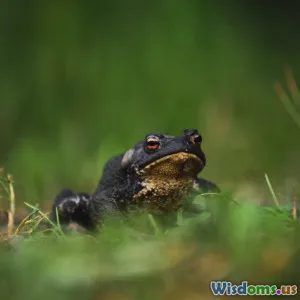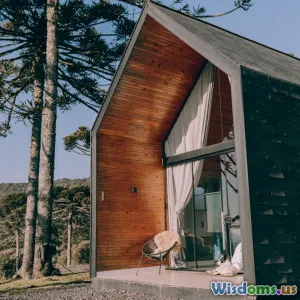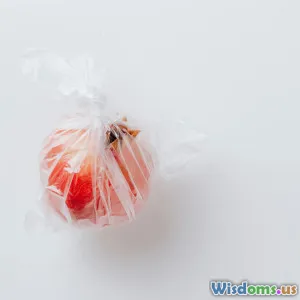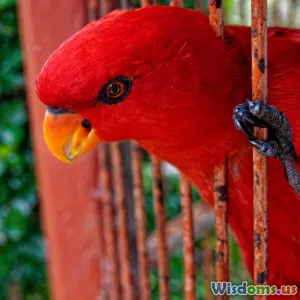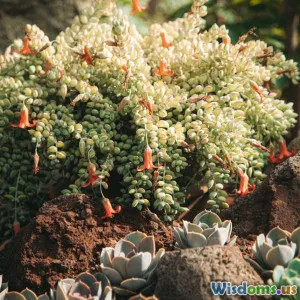
The Significance of Native Plants in Landscaping
9 min read Explore why native plants are vital in landscaping for ecology, biodiversity, and sustainable gardens. (0 Reviews)
The Significance of Native Plants in Landscaping
Landscaping shapes not only the aesthetic but also the ecological health of an area. While exotic ornamentals often impress with exotic flair, native plants carry profound importance that transcends mere beauty. They act as keystones in maintaining balanced ecosystems, supporting wildlife, and ensuring sustainable horticulture. This article delves into the significance of native plants in landscaping, illuminating their ecological role, environmental benefits, and practical advantages.
Introduction: The Underestimated Power of Native Flora
Imagine walking through a garden buzzing with life: butterflies flitting among brightly colored blossoms, birds perching on branches, and bees actively pollinating nearby flowers. Much of this vibrancy stems from the plants native to the region—species that evolved hand-in-hand with the local wildlife.
Native plants are often overshadowed by exotic species due to trends and visual preferences. However, their role extends far beyond aesthetics. This article aims to reveal how landscaping with native plants benefits biodiversity, conserves resources, promotes resilience, and fosters ecological harmony.
The Ecological Foundation: Why Native Plants Matter
Coevolution and Biodiversity Support
Native plants have evolved with native wildlife over thousands or millions of years, forming intricate, interdependent relationships. For instance, the Monarch butterfly (Danaus plexippus) relies exclusively on native milkweed (Asclepias spp.) as the sole larval food source. Without the presence of milkweed, Monarch populations dwindle dramatically. This illustrates the critical role native plants play in supporting local fauna.
A study by Tallamy (2007) found that oak trees (Quercus spp.), native to North America, support over 500 species of caterpillars, which serve as foundational food sources for birds and other insectivores. In contrast, non-native ornamental species may juggle only a handful of such relationships, showing how native plants underpin diverse food webs.
Habitat Restoration and Wildlife Corridors
Urban and suburban areas often disrupt natural habitats, fragmenting ecosystems. Landscaping with native plants can reconnect these spaces, creating micro-habitats and corridors that facilitate wildlife movement and survival. For instance, in California, the creation of native plant gardens along highways has helped support the migration corridors of pollinators critical to agriculture and wild ecosystems.
These green refuges enhance local biodiversity and contribute to ecosystem resilience in the face of urbanization and climate change.
Environmental Benefits of Incorporating Native Plants
Water Conservation
Native plants are remarkably adapted to local rainfall patterns and soil conditions. They typically require less supplemental watering compared to exotic species unfamiliar with the regional climate. A practical example is the xeriscaping movement in the American Southwest, which uses native desert flora like Agave and Sagebrush to dramatically reduce water usage in landscaping projects.
Soil Health and Erosion Control
Native deep-rooted plants promote soil stability, preventing erosion naturally. Their roots bind the soil more effectively than many shallow-rooted ornamental counterparts. For instance, switchgrass (Panicum virgatum), native to North American prairies, excels in minimizing soil runoff due to its extensive root system.
Additionally, native plants support beneficial soil microorganisms, enhancing nutrient cycling and soil fertility.
Reduction of Chemical Inputs
Because native plants thrive in local conditions, the need for fertilizers, pesticides, and herbicides falls drastically. This reduction not only benefits the gardener's wallet but also lowers run-off pollution, enhancing water quality and safeguarding nearby aquatic ecosystems.
Practical Advantages for Gardeners and Communities
Lower Maintenance and Cost Savings
Once established, native plants generally require less pruning, fertilizing, and pest control. This means gardeners invest less time and money maintaining their landscapes. A survey by the Lady Bird Johnson Wildflower Center demonstrated that native plant gardens cut maintenance hours by nearly 50% compared to traditional ornamental landscapes.
Enhanced Aesthetics and Seasonal Interest
Contrary to misconceptions, native plants offer diverse colors, forms, and textures year-round. For example, the native North American Crimson Coneflower (Echinacea purpurea) brings vivid summer hues and valuable nectar for pollinators. The deep reds and browns of native sedges in autumn enrich landscapes with subtle seasonal charm.
Educational and Cultural Value
Using native plants in landscaping helps communities reconnect to their natural heritage. Public parks and school gardens featuring native species provide educational opportunities, fostering appreciation for local ecosystems.
Citizens of the Pacific Northwest, for example, celebrate their native Douglas-fir and Western Red Cedar not only as emblematic trees but as cultural pillars closely tied to indigenous peoples’ traditions.
Real-World Examples and Success Stories
The Million Pollinator Garden Challenge
This nationwide movement encourages planting native species to support declining pollinators. Thousands of participants — from homeowners to city planners — plant native gardens that feed bees, butterflies, and hummingbirds, visibly improving urban biodiversity.
Restoration Projects in Australia
In Victoria, Australia, urban native plant landscaping has contributed to the recovery of the endangered Leadbeater’s Possum by restoring essential food plants and habitat structure. This demonstrates how native landscaping can have direct conservation impacts.
Overcoming Challenges in Using Native Plants
Despite numerous benefits, some gardeners hesitate due to perceived difficulties in sourcing native plants, concerns about less dramatic aesthetics, or uncertainty about management. Education, plant nurseries focusing on natives, and community workshops can alleviate these barriers.
Landscape architects increasingly integrate native species blends creatively to combine visual appeal with ecological function, proving aesthetics and sustainability can go hand in hand.
Conclusion: Native Plants as Cornerstones of Sustainable Landscaping
The significance of native plants in landscaping extends well beyond ornamental value. They are vital in supporting local wildlife, conserving water, protecting soil, and fostering resilient ecosystems. Furthermore, native plant landscapes can be affordable, low-maintenance, and strikingly beautiful.
By choosing to incorporate native plants, gardeners, urban planners, and communities invest in ecological health and heritage protection — crafting landscapes that flourish naturally and support the intricate animal kingdom that depends on them.
As naturalist E.O. Wilson eloquently noted: "To protect any species, we must protect its habitat." Native plants form the backbone of these habitats. Embracing them lets us bridge human environments with the wild world, fostering harmony in the living tapestry around us.
References
- Tallamy, D. W. (2007). Bringing Nature Home: How Native Plants Sustain Wildlife in Our Gardens. Timber Press.
- Lady Bird Johnson Wildflower Center. (n.d.). Native Plant Information & Resources.
- Xeriscape Council. (n.d.). Principles of Xeriscaping and Drought-Resistant Landscaping.
- U.S. Fish and Wildlife Service. (2020). Pollinator Friendly Practices.
Rate the Post
User Reviews
Popular Posts










